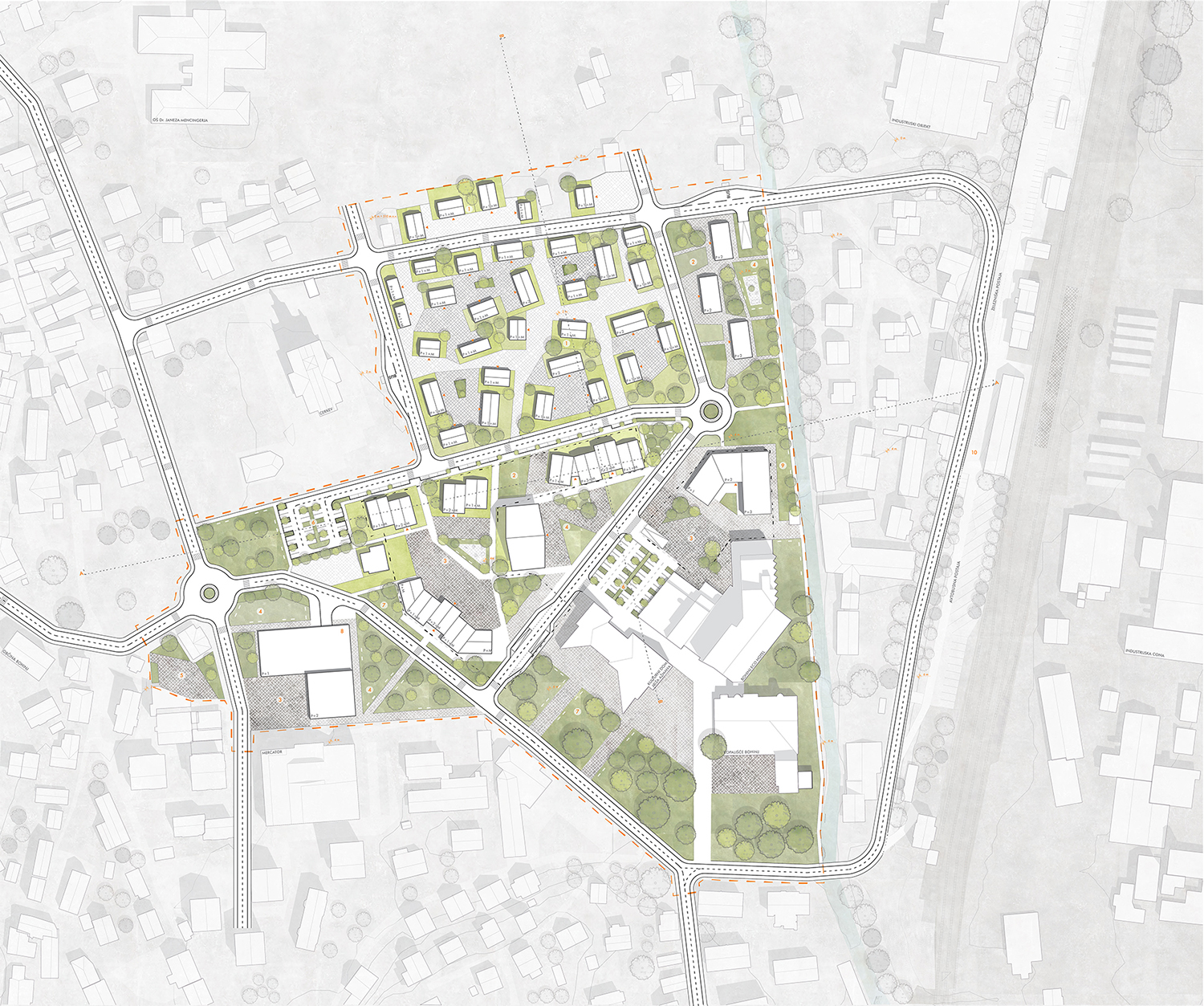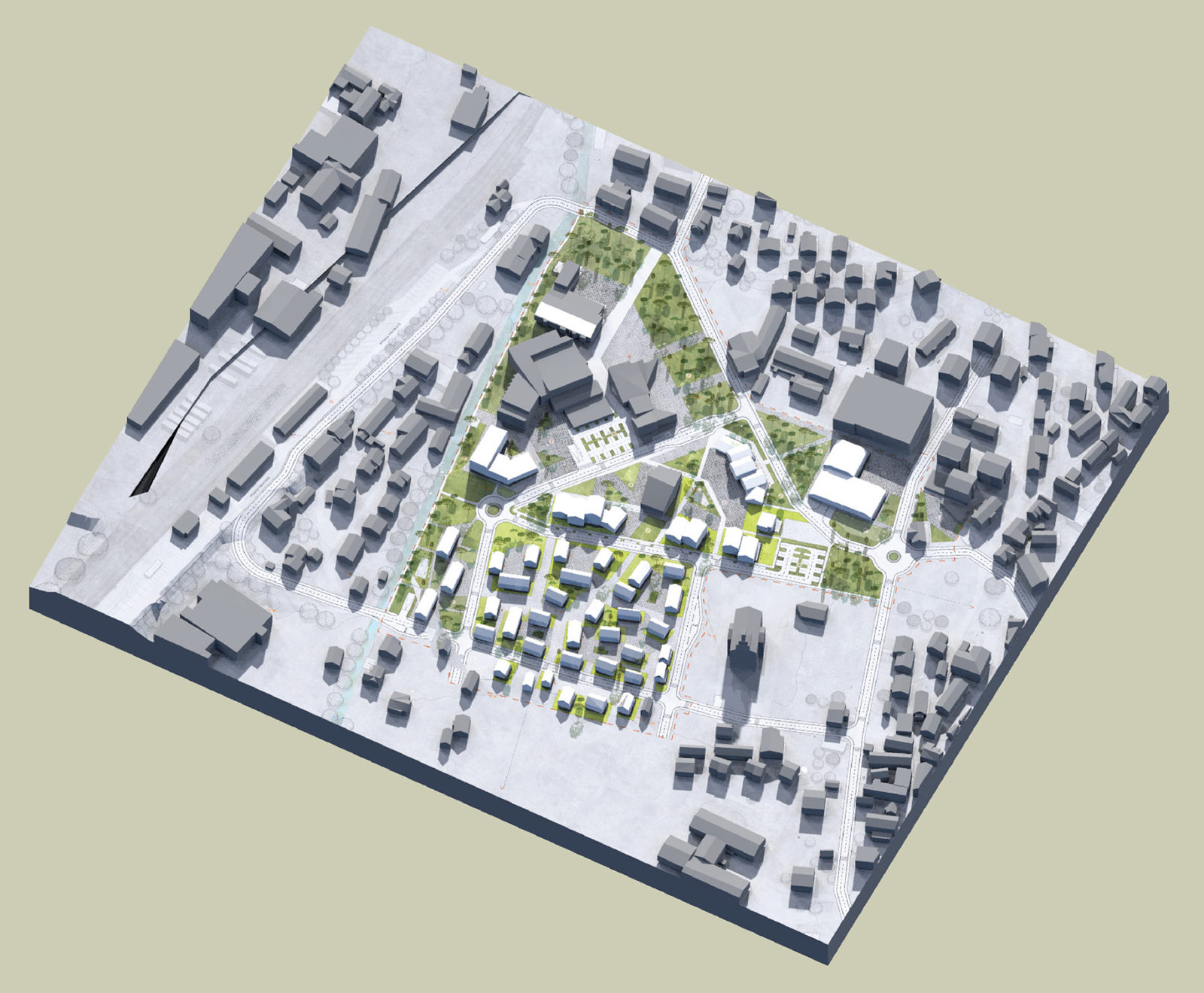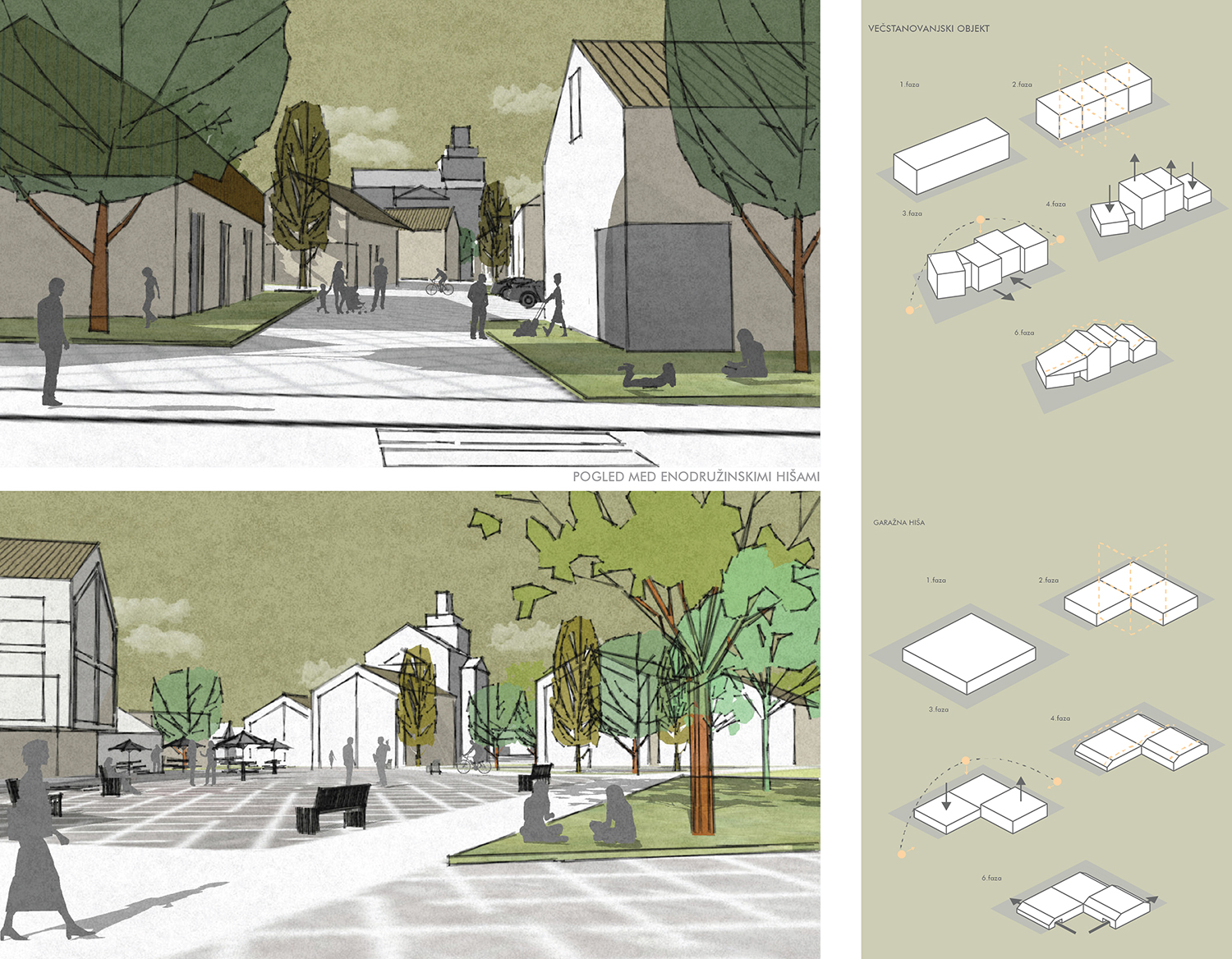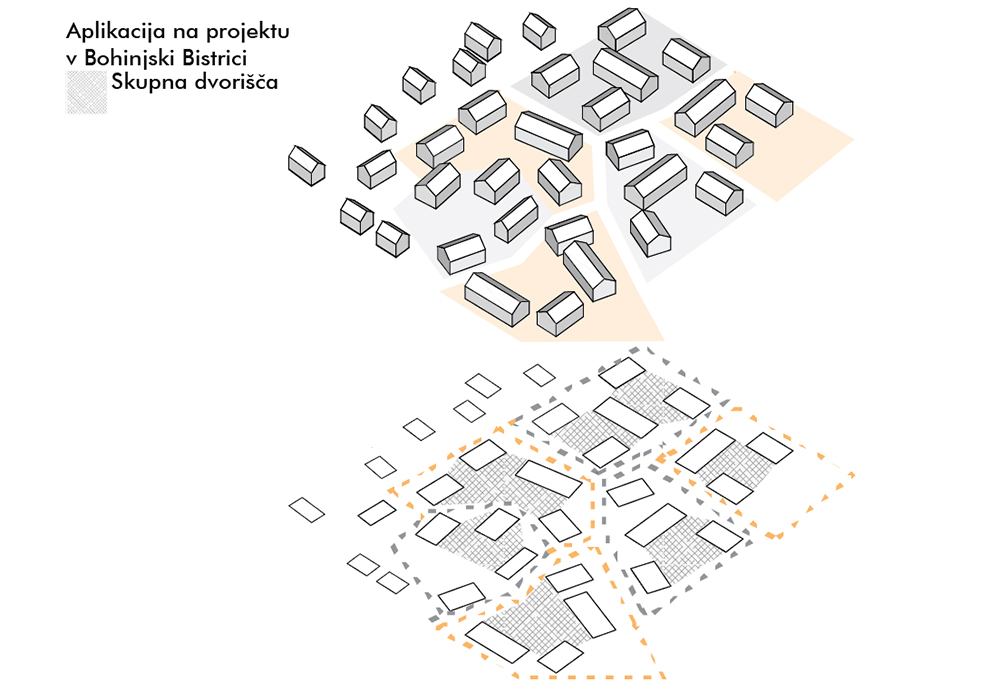Soseska po vzoru vaških skupnosti in značilne organizacije kmetij
Teja Golob
-
Seminar
-
Mentor
-
Demonstratorabs. Nina Povše, dipl. inž. arh. urb.
-
Študijski programiUniverzitetni študijski program prve stopnje Urbanizem (UŠU)
-
Letnik3. letnik
-
Študijsko leto2021/22
Slovenia’s rural areas are made up of diverse settlements, which have developed on the basis of common natural features, the exploitation of natural resources, arable land and the needs of the inhabitants who lived there. The settlements of Gorenjska, which began to emerge in particular at a time when agriculture was the main economic activity, developed spontaneously and unplanned, which is why they have distinctive settlement patterns today. These settlement patterns are mainly made up of farms and farmsteads in clusters, which, in relation to each other, are to one another, forming common spaces and thus creating a community in the village. Natural features, functional needs, available space and convenience are the characteristics that define the layout of the buildings of each farm and homestead. Nowadays, functionality The functionality of the buildings has changed, but the spaces between the buildings retain their primary function. These are the semi-public spaces and the larger private courtyards, which are also the spaces social gatherings. These intermediate spaces help to create a lively environment in the settlement, a village community and cohesion between the inhabitants.

The Bohinj Valley has a specific geographical location and natural values that define it and give it a distinctive identity. Throughout history, the area has developed many different activities have developed in the area, such as iron and steel, later on also the steel industry and pastoralism. Later, the construction of the railway also had an impact on the formation of the settlement, which, through its function, enabled a new activity, namely tourism. Tourism had an impact on the transformation of the settlements, as the activity required a number of changes in land use. These activities have had an impact not only on economic development, but also on the settlement patterns of the the valley. Each of these activities required a specific space and material from the environment, the which had an impact on the life and living conditions of the farmers. Thus, spontaneously and according to the needs of the settlements that we know today began to develop spontaneously and according to the needs of the farmers. Seemingly unorganised settlements, which are made up of farmsteads, have a meaningful composition within themselves, which not only forms between the buildings, but also unites the village community.

The homestead in Slovenian space represents the basic spatial unit through which we understand settlement and architectural culture, and at the same time, we understand the relationships within it. For the first time, the word homestead took stronger shape at a time when the main economic The main economic activities were agriculture and livestock breeding. These had a strong influence on the formation of the homestead, which originally consisted of a farmhouse and outbuildings. in the vicinity. The layout of the farmhouse itself was thus adapted to the life of the peasantry. family and the work on the farm. This organisation of what was at first incomprehensible chaos is now defining the landscape’s distinctive culture and identity. Different typologies are divided according to their organisation within themselves, which has been shaped primarily by the location and the organisational needs of the farmer. Each of the homesteads, in relation to the surrounding area, forming spaces that constitute not only communication but also village space and community.
The homestead in Slovenian space represents the basic spatial unit through which we understand settlement and architectural culture, and at the same time, we understand the relationships within it. For the first time, the word homestead took stronger shape at a time when the main economic The main economic activities were agriculture and livestock breeding. These had a strong influence on the formation of the homestead, which originally consisted of a farmhouse and outbuildings. in the vicinity. The layout of the farmhouse itself was thus adapted to the life of the peasantry. family and the work on the farm. This organisation of what was at first incomprehensible chaos is now defining the landscape’s distinctive culture and identity. Different typologies are divided according to their organisation within themselves, which has been shaped primarily by the location and the organisational needs of the farmer. Each of the homesteads, in relation to the surrounding area, forming spaces that constitute not only communication but also village space and community.
The work has been exhibited at international scientific conference AGGLOMERATION. GROWTH. CHALLENGES. SPACE. at Cracow University of Technology, Faculty of Architecture, Poland, 2. – 3. March 2023



